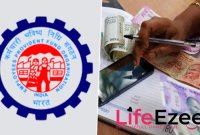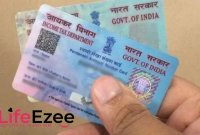10 Things to look out for on this Upcoming Budget
All eyes might be on Finance Minister Nirmala Sitharaman as she prepares to offer the final complete Union Budget of the present term of the Narendra Modi-led National Democratic Alliance (NDA) administration.
Markets and people may have larger expectations of daring insurance policies geared toward elevating people’s income ranges, permitting higher funding in infrastructure to create jobs, rising farm incomes to maintain the agricultural financial system buzzing, and implementing beneficial insurance policies to draw extra international and home funding.
Here are the 10 key things to be careful for:
Individual Income Tax
Individuals and the salaried class can even be paying shut consideration to what the price range proclaims about individual income tax brackets. This may very well be a chance to introduce a cleaner, easier individual income tax slab and price construction to exchange the two-system association in impact since 2020.
Capital Expenditure
Finance Minister Nirmala Sitharaman might reveal massive expenditure plans to draw private funding. The authorities are predicted to stay to their goal to extend capital expenditure within the upcoming Budget 2023-24, with a particular emphasis on public spending on capital belongings. This is per the earlier Budget, which noticed a big enhancement within the Centre’s capex commitments.
Road and other infrastructure developments can enhance financial exercise, building, and job creation. The sector accounts for over 8% of GDP and is the most important direct and oblique job producer, using roughly 40 million people.
Capital Gains Tax
Capital good points tax is charged on income from the sale of each movable and immovable capital belonging. The long-term or short-term capital good points tax is charged relying on how long an asset is held.
Food Subsidy Bill
Another determination that might be watched carefully is the meals subsidy invoice. The authorities agreed in December to increase the free foodgrain scheme underneath the Pradhan Mantri Gareeb Kalyan Ann Yojana (PMGKAY) as Covid help by inserting it underneath the National Food Security Act (NFSA) for 2023. From 2015-16 to 2019-20, the Centre’s annual meals subsidy averaged Rs 1.1 lakh crore. As a result, whereas the invoice for the subsequent yr can be roughly double that quantity, the federal government won’t spend on PMGKAY, which prices practically Rs 14,000 crore monthly.
Fiscal Deficit
Markets and policymakers might be retaining a detailed eye on this statistic. Finance Minister Nirmala Sitharaman is more likely to push on with fiscal consolidation, underscoring the government’s dedication to fiscal accountability. As the epidemic lasted into 2022 and welfare spending grew, the fiscal deficit for 2021-22 remained important at 6.9 % of GDP. The authorities anticipate the deficit to fall to 6.4 % of GDP and intend to proceed with a fiscal discount to obtain a fiscal deficit of lower than 4.5 % of GDP by 2025-26.
Nominal GDP Growth
How will the financial system develop in 2023-24? The price range will present clues. According to statistics ministry figures issued on January 6, India’s nominal GDP progress for FY23 is predicted to be 15.4 %, down from 19.5 % in FY22. In 2022-23, India’s actual or inflation-adjusted GDP was expected to develop by 7%. The World Bank revised its GDP progress prediction for India in the monetary yr 2022-23 to six.9 %, citing the financial system’s high resilience to world shocks.
Asset Monetisation
Budgetary allocations to infrastructure ministries may very well be associated with how far they transfer and carry out within the authorities’ planned national asset monetisation pipeline. (NMP). The government might fall in need of the NMP goal for this yr. So far this monetary yr, transactions of Rs 33,100 crore have been accomplished underneath the NMP. Transactions of Rs 96,000 crore have been executed underneath the NMP within the earlier monetary yr, exceeding the goal of Rs 88,000 crore.
Finance Minister Nirmala Sitharaman stated in August 2021 that the federal government will monetise belongings valued at Rs 6,000 crore between 2021-22 and 2024-25 as a part of the National Monetisation Pipeline (NMP) scheme. The government would retain possession of the belongings distributed by the National Monetisation Pipeline (NMP), which might be returned to the government after a time frame.
Section 80 (C)
Under the favoured “Section 80C” scheme, the government may enhance the tax benefits granted on cash parked in a pool of financial savings devices reminiscent of financial institution fastened deposits, insurance premiums, and mutual funds from Rs 150,000 to Rs 200,000 per yr. If enacted, the concept might encourage people to place their extra income into banking and the monetary system somewhat than stockpiling money. Since 2014-15, the deduction restriction underneath Section 80C has been Rs 1.5 lakh. In its first price range, printed in July 2014-15, the NDA government elevated the yearly funding restriction underneath Section 80 (C) by Rs 50,000 to Rs 1.5 lakh.
Millets
As India prepares to inform the celebration of International Millet Year 2023 and encourage the cultivation and consumption of nutri-cereals, the Union Budget might supply a particular fund or a scheme for millets. Millets are termed “Smart Food” since they’re straightforward to develop, typically natural, and have a high dietary worth. The Indian government, led by Prime Minister Narendra Modi, sponsored the proposal for the International Year of Millets (IYM) 2023, which was accepted by the United Nations General Assembly (UNGA). The assertion has helped the government of India to be at the forefront of the IYM celebrations. Modi has suggested making IYM 2023 a ‘People’s Movement’ alongside presenting India because of the ‘Global Hub for Millets’.




